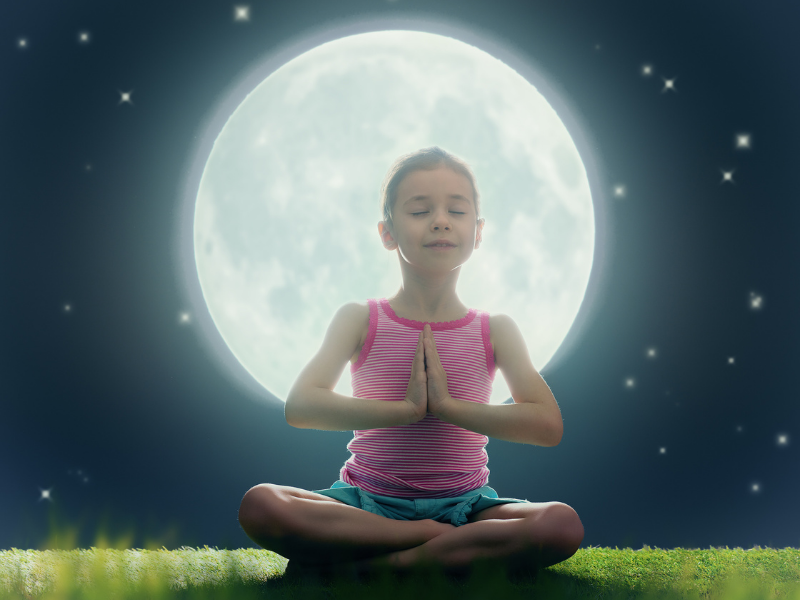You know those nights when you just can’t sleep, when your mind is racing
or when you’re tense and wound up? Those symptoms aren’t reserved for
adults.
Young children can feel anxious, energetic or disconnected at bedtime, just
like you. Research is beginning to catch up with the anecdotal evidence
that suggests children who practice yoga-based movement, breathing and
mindfulness activities are better able to regulate their emotions, manage
stress and calm themselves. Those same practices can help you and your
child connect and wind down toward a more successful bedtime.
The following bedtime yoga routine begins with a few standing poses to get
the last of the day’s wiggles out, then moves toward poses that are more
soothing to the nervous system to ease you and your child toward restful
repose.
The descriptions of the poses are for your general understanding. Please
don’t pressure your child to do the poses “correctly.” Instead strive to
cultivate a spirit of relaxation and fun. Encourage your child to follow
along as you model the exercises.
Better Bedtime Yoga Routine
- Basic Sun Breath – Stand tall with your feet hip distance apart. Breathe in
through your nose while raising both arms out to the sides and bringing
your palms together above your head. Exhale and continue to press your
palms together as you lower your hands to your heart. Repeat this breath
sequence 3-4 times, breathing slowly through your nose. - Crescent Moon Pose – Pause at the top of a Sun Breath. Keeping your arms
overhead, create a crescent moon shape by curving your torso to one side.
Pause on that side for several breaths and then repeat on the other side. - Downward Dog Pose – Come down to the floor on your hands and knees with
your fingers spread wide like starfish. Turn your toes under and lift your
hips up and back. Yoga dogs sometimes like to bark or growl to get rid of
the day’s frustrations. They also like to wag their tails by wiggling their
hips or by stretching one leg at a time out and up behind them. - Butterfly Pose and Butterfly Forward Fold – Sit on the floor with your
knees out to the sides and the soles of your feet touching. Place your
hands on your shoulders and circle your elbows while gently lifting and
lowering your knees to fly. Engage your child’s imagination by asking what
color their wings are, or what they might see if they were fluttering
through a garden.Next, raise both arms overhead, stretching long through your torso, and
fold forward over your feet. For greater connection, sit facing your child
in this pose and hold hands to give each other a gentle, supported stretch. - Child’s Pose – Kneel with your hips resting on your feet and drape your
torso over your thighs to rest your forehead on the floor, a yoga block or
a small pillow. Rest your arms on the floor by your sides, or stretch your
arms forward to hold hands with your child. - Buddy Breathing – Tuck your child in bed with a favorite stuffed animal.
Have your child place the toy on his belly and imagine he is rocking his
“buddy” to sleep as his belly rises and falls with each breath.Adapt this routine to suit your energy and available time. Just a few
minutes of breath and movement can help you and your child release tension
and drift more easily toward Dream Land.
Kids’ and Families’ Yoga Bookshelf
- “Itsy Bitsy Yoga,” Helen Garabedian
- “Good Night Yoga,” Mariam Gates and Sarah Jane Hinder
- “The Yoga Way to Radiance,” Shakta Khalsa
- “Little Flower Yoga for Kids,” Jennifer Cohen Harper
- “Little Yoga, a Toddler’s First Book of Yoga,” Rebecca Whitford and Martina
Selway

